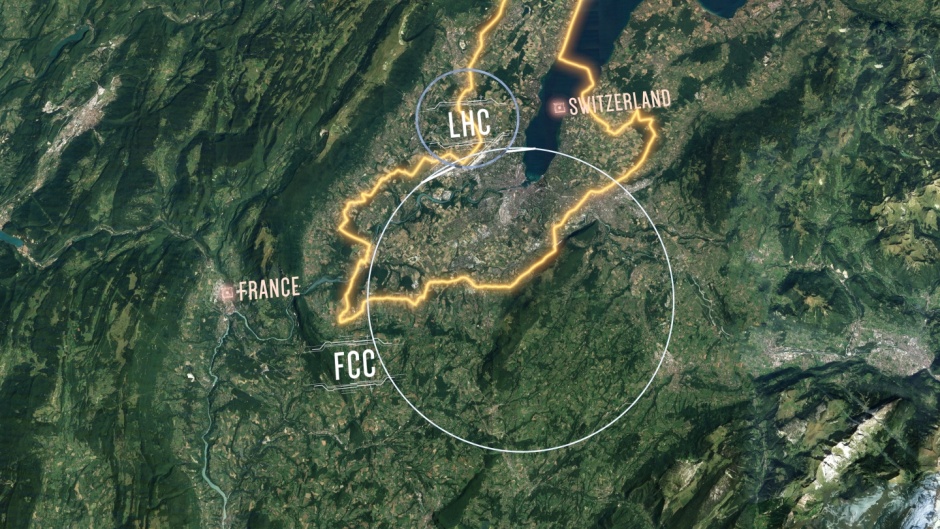
The search for new particle physics may entail building a successor to the Large Hadron Collider consisting of a 100km-diameter cyclotron capable of smashing subatomic particles together with 10 times more energy than the LHC. The Future Circular Collider (FCC) commission, involving 1300 contributors from 150 universities, research institutions and industrial partners, has published its four-volume Conceptual Design Report (CDR), detailing the technical challenges, cost and schedule for building the proposed device, which it hopes would discover a new class of subatomic particles involved in mediating the forces at work in the universe.
The CDR is part of a roadmap to be drawn up by particle physicists as an update to the European Strategy for Particle Physics. Over the next two years, the scientists will decide how to continue their research after the Large Hadron Collider. The FCC is not the only plan to be considered: another option is a large linear collider, known as CLIC (compact linear collider).
The CDR has taken four years to compile. It envisages constructing a new circular tunnel beneath CERN and installing a new magnetically-driven particle collider, equipped with detectors similar to those already existing at the LHC. “The FCC’s ultimate goal is to provide a 100-kilometre superconducting proton accelerator ring, with an energy of up to 100TeV, meaning an order of magnitude more powerful than the LHC”, said CERN director for Accelerators and Technology, Frédérick Bordry.
“The FCC conceptual design report is a remarkable accomplishment,” commented CERN director-general Fabiola Gianotti. “While presenting new, daunting challenges, the FCC would greatly benefit from CERN’s expertise, accelerator complex and infrastructures, which have been developed over more than half a century.”
The higher energies are hoped to enable FCC to generate particles demonstrating physics beyond the Standard Model, the theory which explains the composition and behaviour of matter and forces through the interactions of a family of 17 particles, the last of which – the Higgs boson – was predicted in the 1960s and finally discovered by the LHC in 2012. Since then, however, the instrument has not discovered any further particles, despite physics discoveries that cannot be explained by the Standard Model, including the faster-than-expected rotation of galaxies, the exhilarating expansion of the universe and the workings of gravity.
Physicists have not yet predicted what particles must be responsible for these effects, and therefore do not yet know what energies might be needed to create them in particle collisions. The FCC and CLIC proposals are therefore aimed at creating a variety of collisions. “The FCC timeline foresees starting with an electron-positron machine, just as LEP (large electron positron collider) preceded the LHC. This would enable a rich programme to benefit the particle physics community throughout the twenty-first century,” Bordry explained.
FCC would be a very costly project. The CDR says that it would cost some £20bn and will take around 30 years to build, with experiments starting in the 2050s. Critics state that the science community should have other priorities. The BBC quotes Prof Sir David King, former chief science adviser to the UK government and still a senior adviser on large science projects to the European Commission, who believes that climate change presents a more pressing and urgent challenge.
"We are rattling towards a high temperature planet in which the current global economy will cease to operate. More than 150 million people will be displaced. So if we had a pot of £20bn and we were discussing what to do with it, we would be faced with people in the medical sciences community coming up to us with ideas to improve human health and wellbeing. But I'm going to say a new high priority for human beings is now dealing with climate change."
However, CERN states that collider research has many benefits. “The complex instruments required for particle physics inspire new concepts, innovation and groundbreaking technologies, which benefit other research disciplines and eventually find their way into many applications that have a significant impact on the knowledge economy and society.”




Nanogenerator consumes CO2 to generate electricity
Whoopee, they've solved how to keep a light on but not a lot else.